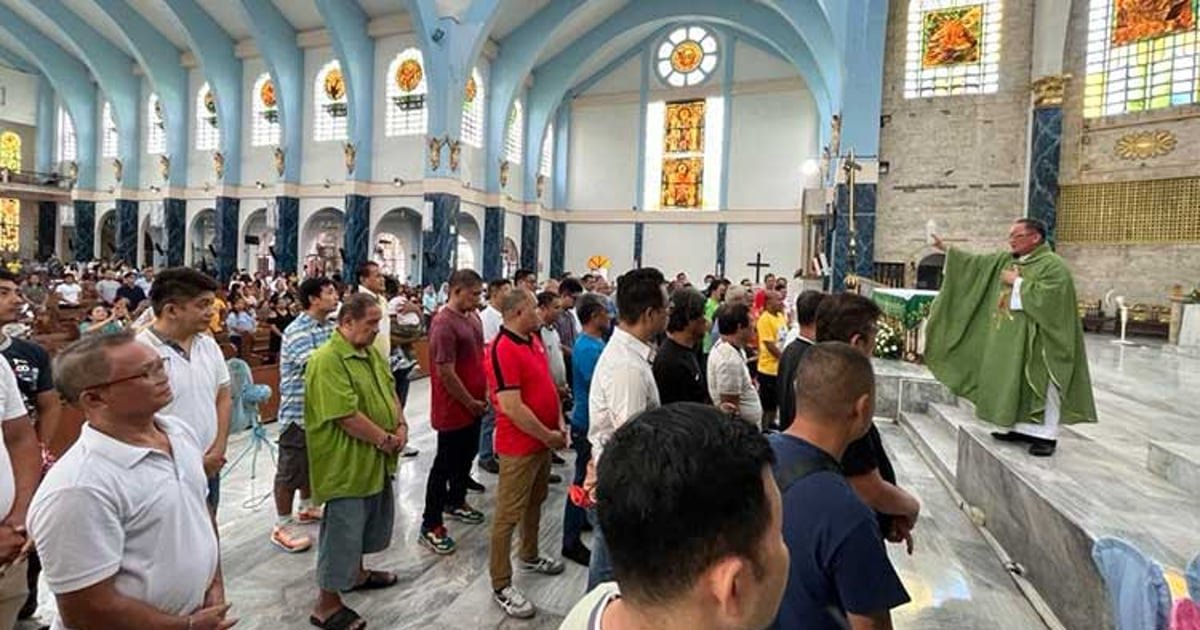AMENDING the Rice Trade Liberalization (RTL) law could cause the government to incur more debts and prevent it from reducing the budget deficit, according to local economists.
They aired their views as Speaker Ferdinand Martin G. Romualdez said the House of Representatives is committed to intensify efforts to expedite plenary debates and attain the approval of the bill to amend the RTL on second reading by Wednesday. (See: https://businessmirror.com.ph/2024/05/13/house-racing-to-amend-rtl-to-cut-rice-prices/).
However, some economists believe that geopolitics which encouraged trade protectionism through the imposition of embargoes necessitated a shift in the country’s rice policy.
“The risk [of amending the RTL] is to create enormous liability for the government, or enlarge the government budget deficit, when NFA [National Food Authority] tries to control the market price. This is based on pre-RTL historical precedent,” Philippine Institute for Development Studies (PIDS) Senior Research Fellow Rhoelano Briones told BusinessMirror.

Urgent need: Shield vs high prices
However, University of the Philippines Professor Emeritus Epictetus Patalinghug noted that what the country needs right now is a shield against high rice prices in the international market, which NFA could provide.
Currently, Patalinghug said the RTL is no longer effective in bringing down rice prices. He said the law “kills the domestic producers” and does not “restrain profit-driven firms from raising prices.”
The NFA’s absence from the local rice market, he said, stymied the government’s ability to address nutritional deficiencies such as hunger, malnutrition and starvation.
“Different times call for different solutions. NFA has become useful today as a last-resort rice supplier to the poor, weak, vulnerable, hungry, and malnourished,” Patalinghug told this newspaper.
Briones said options open for the NFA to finance its rice purchases should it be allowed to intervene in the local rice market could come from supplemental budgets.
If this budget is not enough, the government or even NFA, which is a state-run corporation attached to the Department of Agriculture, could itself borrow from various sources.
Monetary Board Member V. Bruce J. Tolentino, who was a former Agriculture Undersecretary, recommended that the House carefully study first the debates at the Philippine Senate when the RTL was being deliberated.
The Senate, Tolentino said, was thorough and this led to an “extended analysis” of the RTL and, as such, could provide sufficient basis for decisions made on possible amendments of the law.
As to the impact, he said, there was no telling how soon or how much the amendment could impact the economy or the government coffers.
“It depends on the extent of intervention. NFA has a current budget that can only procure so much either from local farmers or via imports. In order to procure more, NFA has to be provided more budget or borrow from banks. Ask the bankers if they will lend to NFA and on what terms,” Tolentino told BusinessMirror.
One thing that is certain, De La Salle University economist Maria Ella Oplas said, is that the RTL review would burden further farmers and even consumers.
Oplas said the aim of reducing rice prices to P30 per kilo would entail either lower payments to farmers or a higher buying price at the expense of the public.
Unfortunately, Oplas said the only “winners” in this arrangement would be rice intermediaries who can buy cheap from farmers and then sell high to the NFA.
“So in that case, small farmers will not benefit and taxpayers will now [shoulder] the difference. I would rather that the government increase our value of money, our purchasing power instead of artificially lowering the price,” Oplas told this newspaper.
Lack of understanding
Ateneo de Manila University economist Leonardo Lanzona said the whole issue of amending the RTL reflected the lack of understanding of competition in the law.
Lanzona said while the RTL was silent on provisions for a buffer stock system, it provided support such as through the Rice Competitiveness Enhancement Fund (RCEF), which provides financial support to farmers to increase productivity and competitiveness.
He said the RTL also provided for a Rice Farmers Financial Assistance Program for cash assistance to farmers during times of crises.
The law, Lanzona said, also created the Rice Crop Manager, an information and communications technology-based system to monitor rice production, supply and demand to detect shortages.
“But it is inconceivable for the traders to manipulate and raise prices because this will mean losing their consumers. Collusion in the form of cartels and monopolies is the only way that the traders can unilaterally increase prices,” Lanzona told BusinessMirror.
Given this, Lanzona said the problem is institutional in nature and thus would not be addressed by the creation of a state buffer stock system to regulate prices.
Lanzona cited a need to empower local traders to compete with presumed members of cartels in order to solve the problem.
This means it is not the law that should change but the implementation of the law such that “whatever the government can do will fail in comparison to what the markets can do.”
Cutting tariffs
In a statement on Monday, the Foundation for Economic Freedom (FEF) said there is no reason for restoring the NFA authority to import rice and go into retail sales of rice.
It would be better, in FEF’s view, to temporarily reduce rice tariffs to 10 percent from 35 percent in order to address the high rice prices.
In April 2024, rice price inflation slowed to 23.9 percent from the 24.4 percent posted in March 2024. However, it marked the fourth consecutive month that rice prices grew over 20 percent.
“FEF would like to reiterate its proposal last year to temporarily reduce the import duty on rice from 35 percent to 10 percent. If this measure is adopted, it would lower the landed cost of imported rice and exert downward pressure on its wholesale and retail prices,” FEF said in a statement.
Apart from this, FEF supported the RTL’s Implementing Rules and Regulations (IRR) which named the Philippine International Trading Corporation (PITC)—under the Department of Trade and Industry (DTI)—as the institution to import all the country’s rice requirements.
The group of economists also said the NFA should ramp up its palay procurement from local producers to create the country’s buffer stock. This is of greater importance than its previous role of stabilizing retail prices.
Any amendments to the RTL should focus on recommendations to improve the RCEF and the National Rice Program which have already undergone evaluation studies, said FEF.
“They [studies] should be able to distill lessons and insights learned from these evaluation studies, which adopted rigorous methodologies in analyzing empirical data and evidence. Only then can we have a rationale and scientific approach to addressing the challenges hounding our rice sector,” FEF said.
In 2019, lawyer Jose Manuel “Chel” Diokno noted an inordinate focus and priority to restructure the NFA through the RTL.
This, Diokno said, should have been the subject of a separate law. He then warned that the NFA provision in the RTL could jeopardize not only the livelihood of some 6,000 workers but also the country’s food security goals.
He said a law usually accompanies the government’s policy decision to restructure or abolish a certain department. This is especially crucial for workers who depend on these agencies for livelihood.
Diokno noted that the new law does not have provisions on what will be done to affected NFA workers and whether they will receive separation pay. (See: https://businessmirror.com.ph/2019/02/21/focus-on-rice-import-rules-not-nfa-overhaul/).
Image credits: Nonie Reyes









